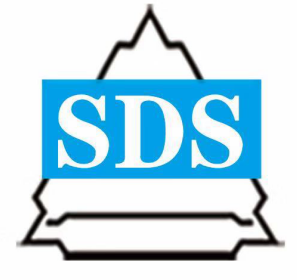Market Forecast: Projecting Future Trends in Steel Fiber Price Dynamics
The realm of steel fiber pricing is marked by dynamic shifts influenced by a myriad of factors, from global market forces to industry-specific dynamics. As stakeholders in the construction industry seek to optimize their procurement strategies, the ability to project future trends in steel fiber price dynamics becomes a strategic imperative. This exploration delves into the art and science of market forecasting, offering insights into the factors shaping the future landscape of steel fiber prices.
Understanding Current Trends and Influencing Factors
To project future trends, a comprehensive understanding of current market dynamics is essential. Analyzing factors such as raw material costs, global demand for steel, geopolitical events, and technological advancements in steel fiber production provides a foundation for forecasting. Current trends often act as precursors to future developments, making it imperative for stakeholders to remain vigilant in monitoring the ever-evolving landscape of steel fiber pricing.
The construction industry, as a major consumer of steel fibers, introduces industry-specific variables that contribute to pricing dynamics. Construction activity, infrastructure projects, and building trends all play a role in influencing the demand for steel fibers. Understanding these variables and their cyclical patterns allows for a more nuanced projection of future trends. Additionally, advancements in construction technologies and materials may impact the demand for steel fibers, shaping the trajectory of prices in the coming years.
Factors Shaping Future Trends in Steel Fiber Prices
The evolution of production technologies in the steel fiber industry is a pivotal factor shaping future pricing trends. Innovations that enhance efficiency, reduce production costs, and improve the quality of steel fibers have a direct impact on pricing dynamics. As new manufacturing methods emerge and gain adoption, they can lead to more competitive pricing structures, influencing the overall affordability and accessibility of steel fibers for construction projects.
The growing emphasis on sustainability in the construction industry introduces another layer of influence on future steel fiber price. As green building practices gain momentum, the demand for sustainable construction materials, including eco-friendly steel fibers, may increase. This shift towards sustainability can impact pricing by creating a market for premium, environmentally conscious steel fiber products. Forecasting future trends necessitates a keen awareness of these evolving environmental considerations within the construction landscape.
Strategies for Proactive Engagement
Proactive risk management is a cornerstone of effective market forecasting in the context of steel fiber prices. Anticipating potential risks, such as supply chain disruptions, geopolitical events, or fluctuations in raw material prices, allows stakeholders to implement risk mitigation strategies. By developing contingency plans and diversifying sourcing channels, construction professionals can navigate uncertainties and position themselves to adapt swiftly to unforeseen challenges in the pricing landscape.
In an era of advanced analytics, data-driven decision-making becomes a powerful tool for projecting future trends in steel fiber prices. Leveraging data analytics and market intelligence platforms provides stakeholders with real-time insights into market trends, enabling them to make informed decisions. By embracing data-driven strategies, construction professionals can enhance their ability to forecast future pricing dynamics and align their procurement practices with market realities.
In conclusion, "Market Forecast: Projecting Future Trends in Steel Fiber Price Dynamics" underscores the strategic importance of anticipating and adapting to future developments in the steel fiber pricing landscape. By understanding current trends, analyzing influencing factors, and incorporating proactive strategies for risk management and data-driven decision-making, construction stakeholders can position themselves to navigate the evolving market with resilience. In a field where foresight is as valuable as steel itself, the ability to project future trends ensures that procurement strategies remain adaptive and responsive to the ever-changing dynamics of steel fiber pricing.
 English
English 한국어
한국어 français
français Deutsch
Deutsch русский
русский português
português العربية
العربية tiếng việt
tiếng việt ไทย
ไทย Polska
Polska Nederland
Nederland